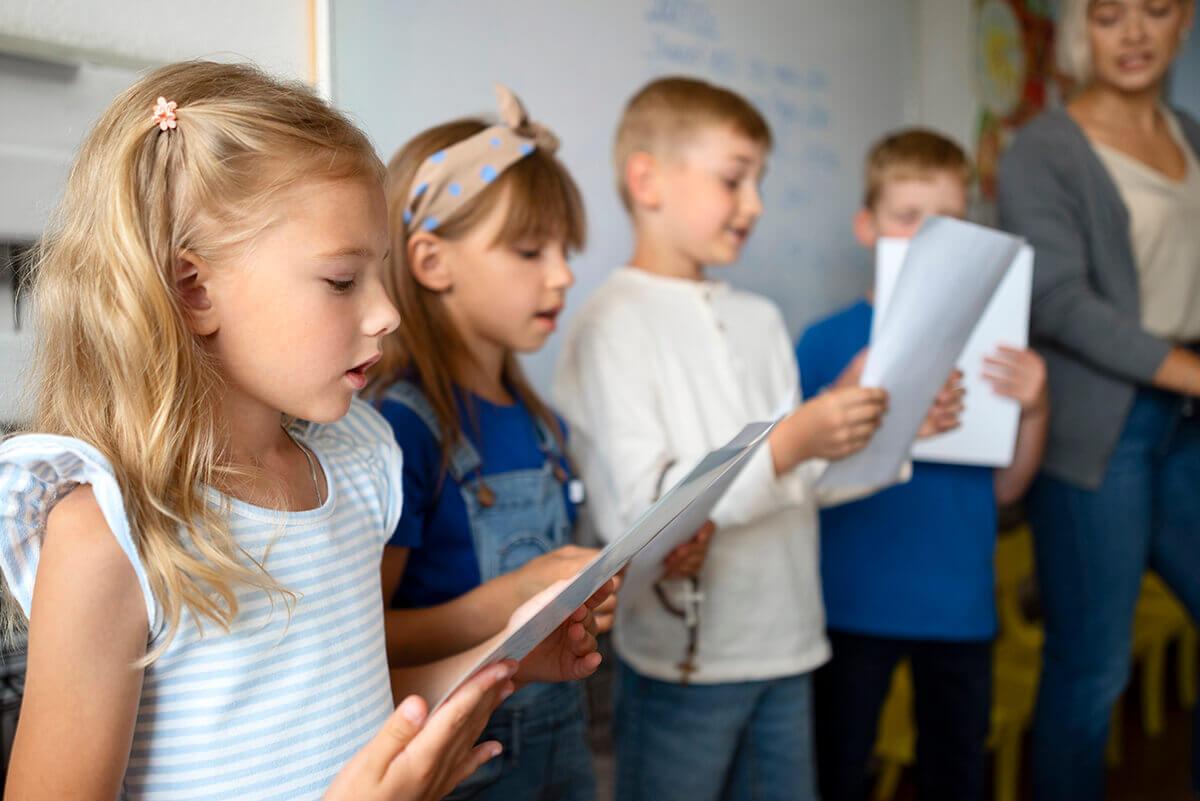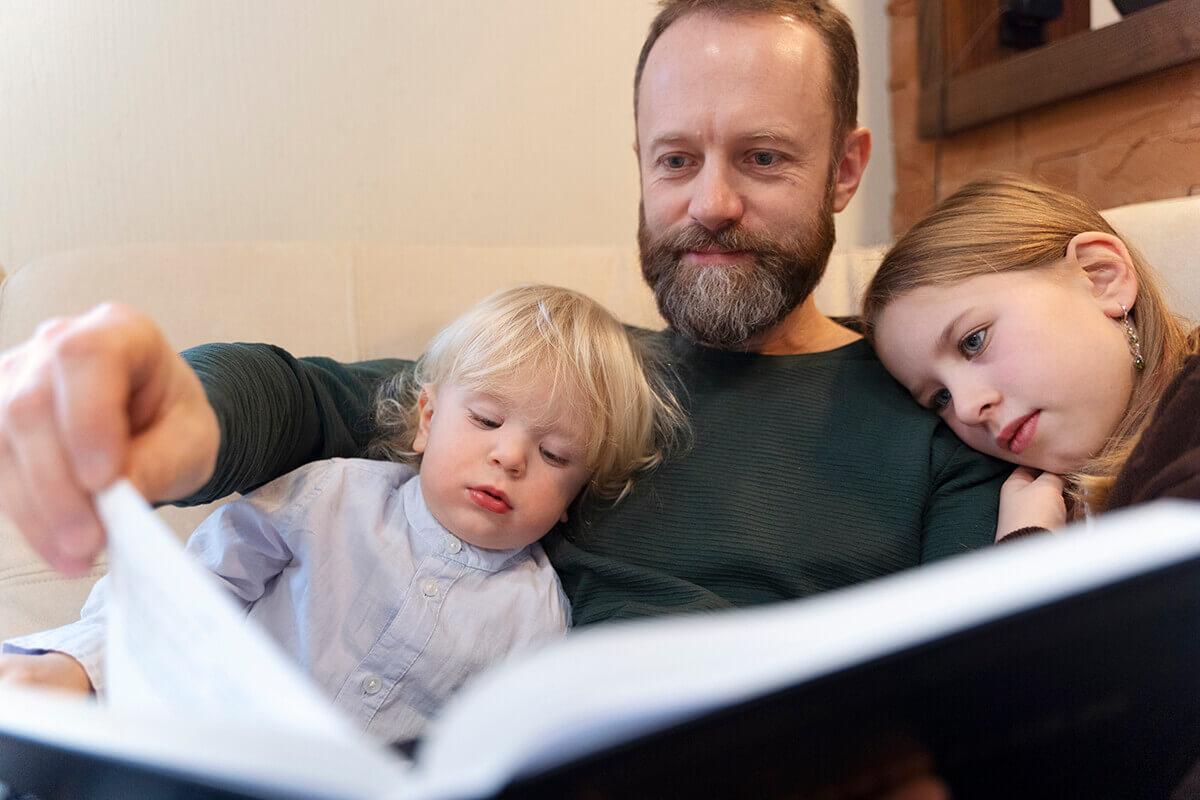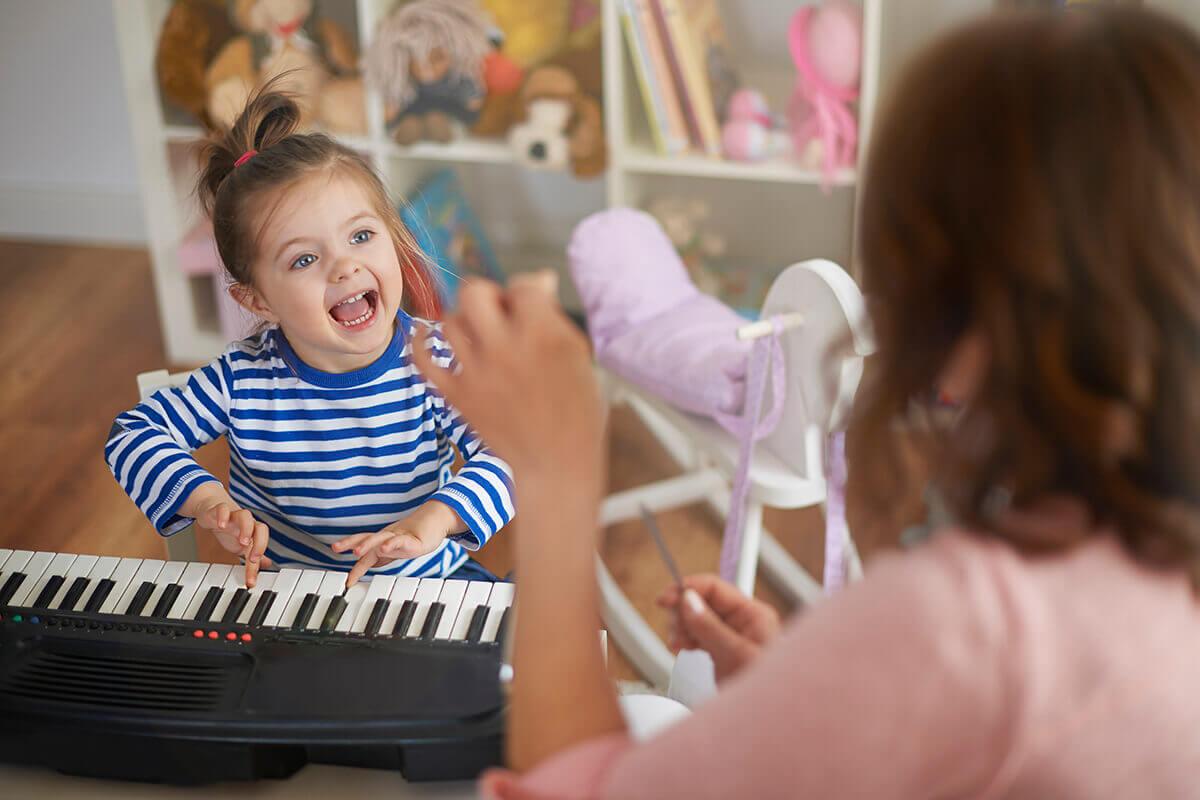Fairy tales and songs are not just entertainment before bedtime. They are one of the most powerful tools for developing speech and imagination, which we have at our disposal from the first days of a child’s life.
Children learn words not from textbooks, but from live speech. When we read a fairy tale about Kolobok or sing “The Pumpkin Walks Through the Garden,” the child hears new words in context. The more often they are repeated, the faster they are engraved in memory and, accordingly, vocabulary is formed.
Songs, especially rhyming and rhythmic ones, help children feel the melody of speech. They learn to distinguish between sounds, which is the first step towards correct pronunciation and further learning to read. In this way, the child develops auditory perception and phonemic hearing.

Remember how children love to have the same fairy tale read to them dozens of times. This is not a whim — it’s how the brain works! Repetition strengthens neural connections, and familiar rhymes and motifs train the memory.
Reading or singing together creates an atmosphere of safety and love. The child feels heard and important, which motivates them to speak more and more freely.
Choose books with interesting and colorful illustrations. Ask your child questions after reading. Ask them to show you characters, phenomena, or objects.

How to integrate fairy tales and songs into a child’s daily life?
✔️ Read every day, even if it’s only for 10 minutes
Morning, evening, or “five-minute breaks” during the day — the main thing is regularity.
✔️ Use emotions and intonation
The more vividly you read, the more the child will “get into” the story and remember the words better.
✔️ Sing together
Even if you think you’re a “bad” singer, your voice is the best for your child. Rhythm and rhyme trigger the mechanism of speech imitation.
✔️ Interactivity above all
Ask questions such as “What happens next?”, “Where is the bunny?”, “What sound does a cow make?” — dialogue activates speech faster than passive listening.
✔️ Add movement
Songs with movements (“Two Happy Geese,” “Finger Game”) combine speech with motor skills — this is the gold standard for speech development in toddlers.

In today’s world, where children are surrounded by gadgets, short videos, and colorful cartoons, fairy tales and songs are a slow magic of development. They teach not only how to speak, but also how to feel, imagine, listen, and wait.
So the next time you sing a lullaby or read a fairy tale about a little bunny, remember: you are not just entertaining your child. You are laying the foundation for their speech, thinking, and even character.
And perhaps it is these quiet evenings with a book or a song that will remain in your child’s memory as the warmest memories of childhood.
Taking care of your children,
Oleksandra Zinchenko,
Speech therapist,
correctional teacher,
founder of the Speech and Correctional Therapy Centers of Oleksandra Zinchenko,
co-founder of the Association of speech therapists Ukraine
More information is available on the website:
https://logocenter-zinchenko.com/
